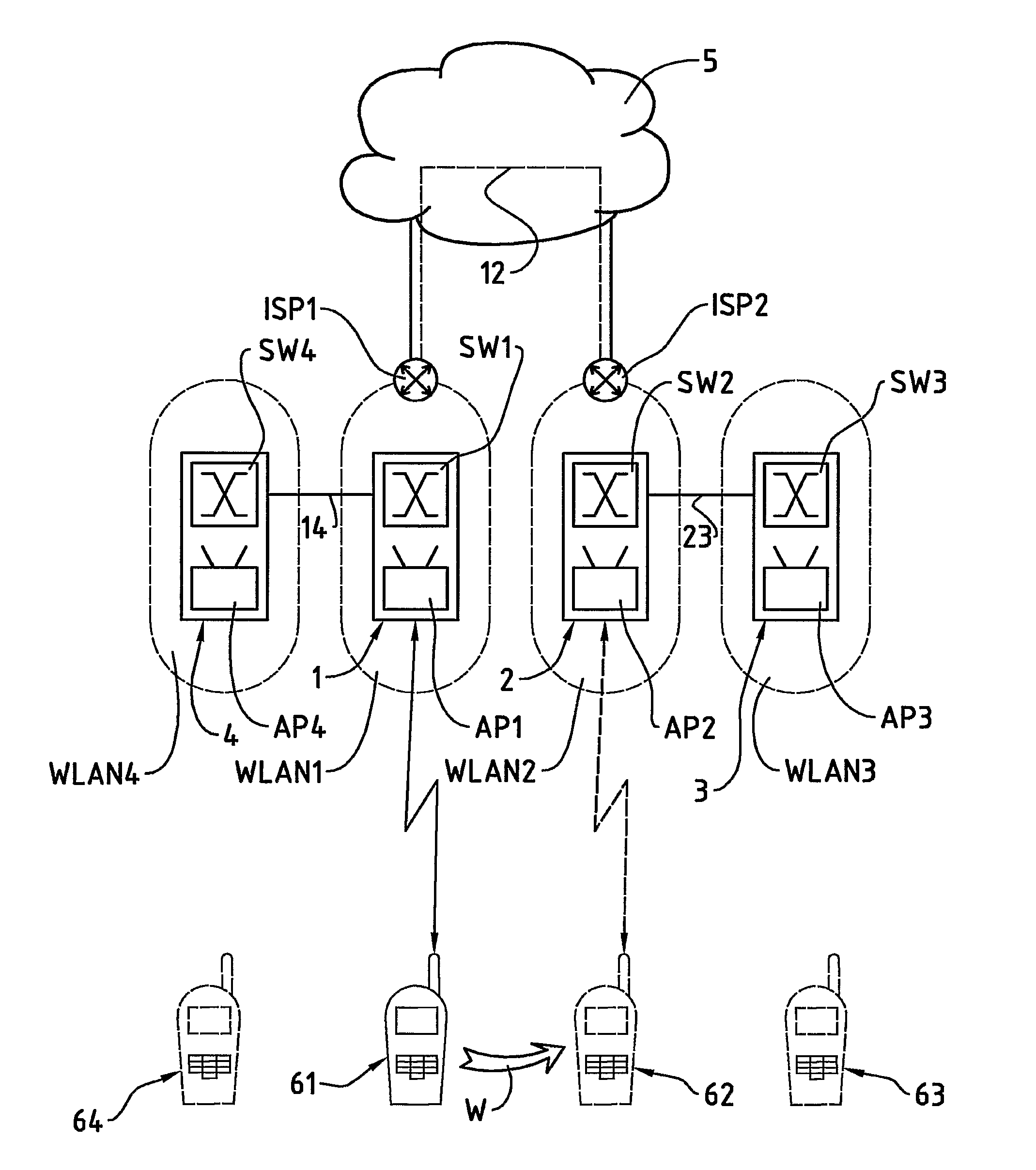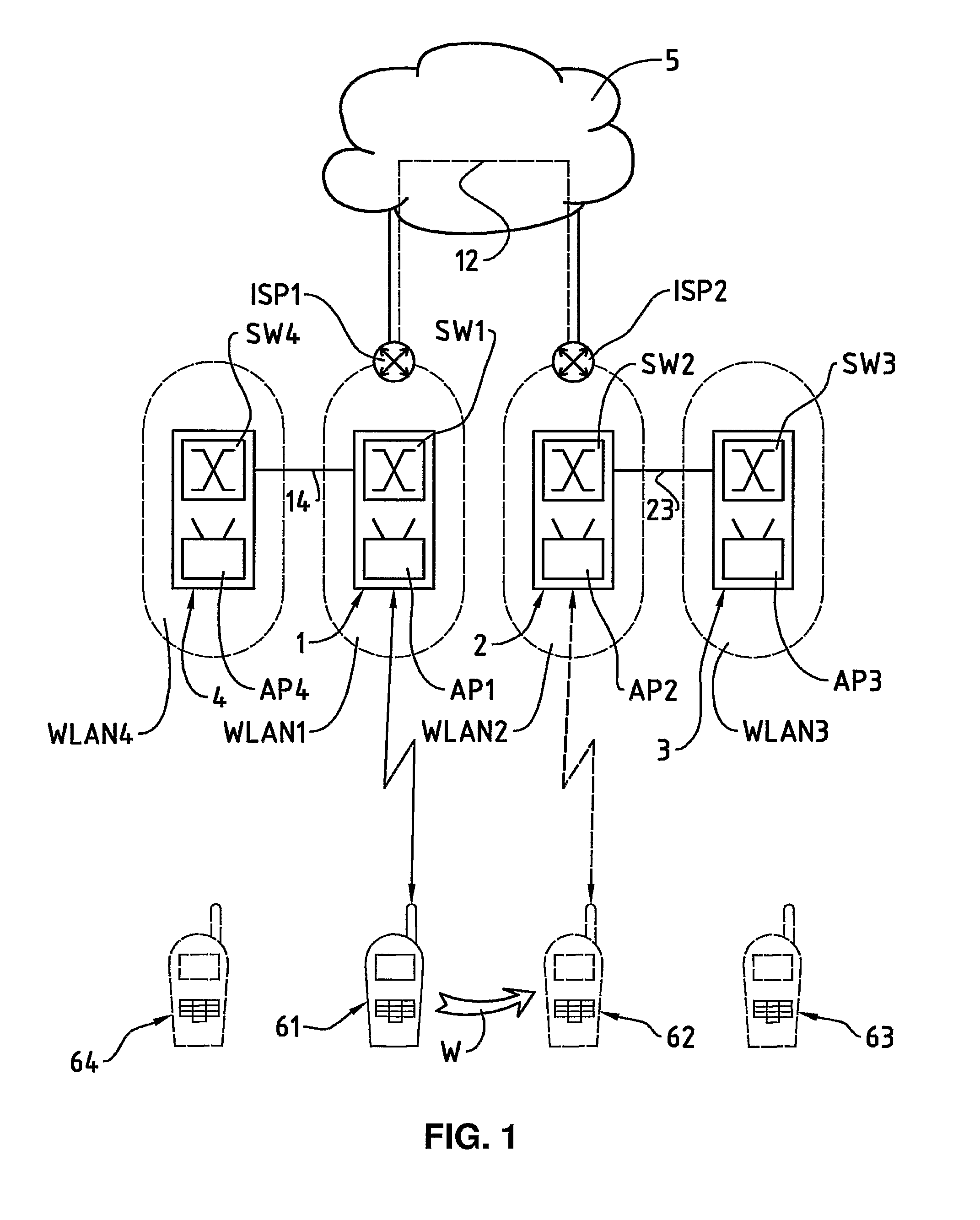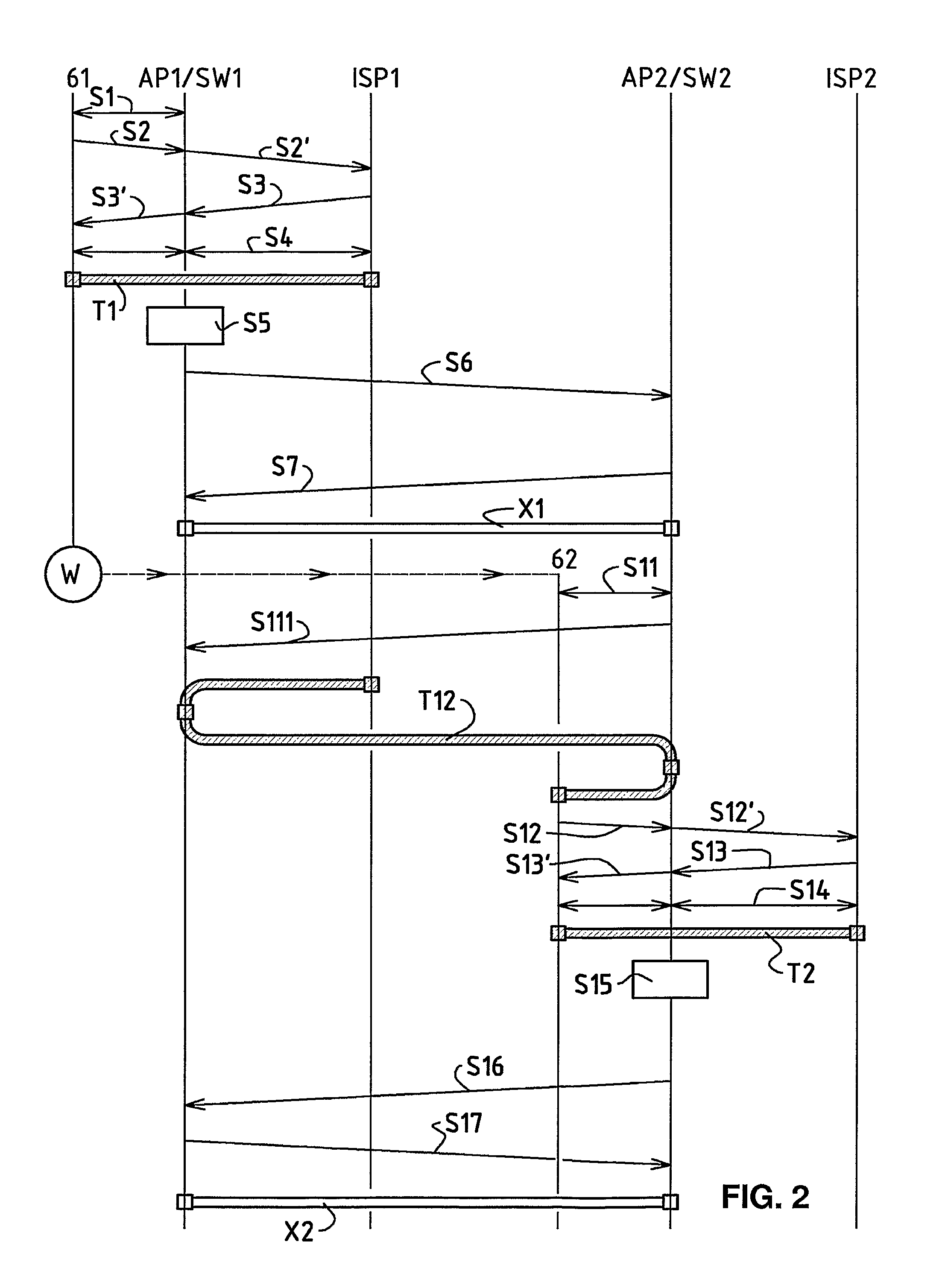WLAN handover for a mobile terminal moving from a first to a second network
a mobile terminal and network switch technology, applied in the direction of data switching by path configuration, wireless commuication services, electrical devices, etc., can solve the problems of low handover, difficult to decide which access point to use, and unsolved problems, and achieve efficient wlan handover
- Summary
- Abstract
- Description
- Claims
- Application Information
AI Technical Summary
Benefits of technology
Problems solved by technology
Method used
Image
Examples
Embodiment Construction
[0023]In FIG. 1, the reference numeral 61 refers to a wireless communication terminal, for example a laptop or palmtop computer, for instance a so-called Personal Digital Assistant (PDA), or a mobile telephone. The wireless communication terminal 61 comprises a communication module for data communication via a wireless local network, a so-called WLAN (Wireless Local Area Network). The wireless local network is preferably based on radio waves, for example according to the standard IEEE 802.11 (Institute of Electrical and Electronics Engineers) or according to a standard for a piconet, e.g. according to the standard known by the name Bluetooth. It can also be based on infrared, however. Subsequently, the terms mobile communication terminal 61 and moved mobile communication terminal 62, 63, 64 are used, whereas the mobile communication terminal 61 is initially located at a first location and whereas, through a movement W from the first to the second location, the moved mobile communica...
PUM
 Login to View More
Login to View More Abstract
Description
Claims
Application Information
 Login to View More
Login to View More - R&D
- Intellectual Property
- Life Sciences
- Materials
- Tech Scout
- Unparalleled Data Quality
- Higher Quality Content
- 60% Fewer Hallucinations
Browse by: Latest US Patents, China's latest patents, Technical Efficacy Thesaurus, Application Domain, Technology Topic, Popular Technical Reports.
© 2025 PatSnap. All rights reserved.Legal|Privacy policy|Modern Slavery Act Transparency Statement|Sitemap|About US| Contact US: help@patsnap.com



